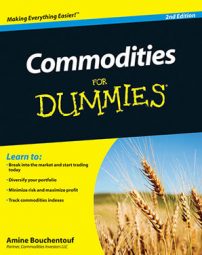Commodities such as oil and gas would be useless if there was no way of transporting them to consumers. In fact, transporting commodities to consumers is probably as important as finding and processing them in the first place. Fortunately, as an investor, this need provides you with fertile ground to make money in the transportation of commodities.
This statistic can put things in perspective for you: Two out of every three barrels of oil that are transported are moved around in ships. The remaining one-third is transported via pipelines. Therefore, the shipping industry plays a crucial role in the integrated oil business.
What’s the relationship between the price of crude oil and oil tanker profit margins? As with many good questions, this one has no straight answer. It depends on a lot of factors.
Tanker spot rates are determined by supply and demand. The supply side, in this case, consists of how many ships are available to transport crude and products to the desired destinations around the world. On the demand side is how much crude oil and products need to be shipped from point A to point B. In the global shipping business, these factors are the two you need to watch closely.
For example, recently tanker spot rates have experienced some supply-side pressure. Because of a series of environmental incidents, in 1997 the International Maritime Organization (the global regulatory body of the shipping industry) ordered the phasing out of all single-hull ships, to help prevent further oil spills.
Because of this regulation, the number of ships in the open sea transporting oil and products has decreased. A supply-side crunch arose, contributing to the increase in tanker spot rates during 2002–2004, the largest run-up in tanker spot rates in recent memory. The program to phase out all single-hull ships from open waters is scheduled to end before 2010.
Shipping companies are planning to replace these single-hull ships with double-hull ships, but as with almost anything that has to do with the commodities business, constructing these ships takes time. Therefore, the supply-side pressure on tanker spot rates will remain until these newly designed double-hull ships are brought onboard.
On the demand side of the equation, demand for crude oil and products worldwide remains robust. In 2010, the world consumed on average 87 million barrels of oil a day, and that number is growing.
Another important demand factor that many industry onlookers sometimes overlook is oil import dependency. Crude oil demand is critical, but if oil could be produced and consumed without the need to transport it across long distances on seaborne voyages, the oil-shipping industry would be out of business.
The lifeblood of the global oil tanker business is the international flow of oil across countries and continents, or the dependence on oil imports. One key metric to help you gauge the level of activity in this area is global import and export data, which the Energy Information Administration’s energy statistics division monitors.
As long as the supply of ships remains tight and the demand for crude oil seaborne transportation remains high, tanker spot rates will stay elevated. To the extent that crude oil prices affect the demand of crude oil worldwide, crude oil prices will have an effect on tanker spot rates.
Specifically, if crude oil prices go so high that folks are no longer willing to buy crude, thus causing demand destruction, the demand for shipping crude oil worldwide will also decrease (this is the notion of elasticity), causing tanker spot rates to go down as well.
However, this rate drop is an indirect effect of rising oil prices, which is why the relationship between crude oil prices and tanker spot rates isn’t easily quantifiable. Too many variables are at play.

